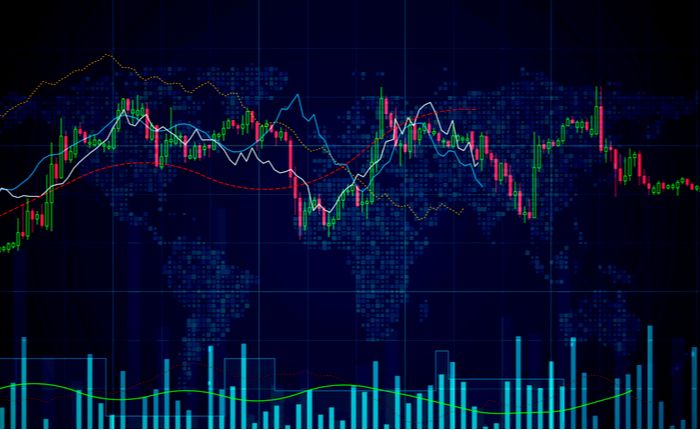Mục lục nội dung
Most futures traders in 2025 are asking the same thing: which are the best prop firms for futures right now? The short answer is: it depends on what you value most — execution quality, fair evaluation rules, payout reliability, or long-term scaling. Below I rank and explain what truly matters, answering six core questions every futures trader should ask before committing capital or time to a firm. I can’t fetch live news from the internet in this reply, but I’ve folded in the major 2024–2025 industry shifts widely reported within the trading community (widespread mid-tier firm closures, increased regulatory scrutiny, and rapid adoption of AI/automation) and the firm-level details you provided.
Which metrics matter most when ranking the best prop firms for futures in 2025?

When ranking the best prop firms for futures, raw profit split is only the starting point. Execution quality — slippage, fill speed and access to real-time market data — often moves from conversation to complaint in forums when traders face the real market. A futures trader’s edge depends on microstructure: tight spreads, low latency, and real liquidity under stress. If a firm’s feed is simulated or delayed, your scalp or intraday edge evaporates.
Fee structure and hidden costs are next. Monthly subscription models vs. one-time challenge fees create different behaviors: subscription models (Topstep-style) incentivize steady improvement, while one-time fees can push traders to gamble for payback. Look past marketing and check refund policies, first-payout timelines, and whether add-ons (faster payouts, higher drawdown) hide real costs.
Finally, look at scaling and payout consistency. Top choices let you scale from $50k to $1M+ through clear, predictable rules and they pay reliably. In 2025, the best prop firms combine fair economics with transparency — weekly or bi-weekly payouts, public payout proof, and robust customer support.
How do different drawdown models affect trader survivability and ranking?

Drawdown logic is a ranking killer or maker. Static drawdowns are simple and fair: a fixed cap you can plan around. Trailing drawdowns reward steady account growth but can punish sudden volatility; intraday drawdowns that ignore end-of-day balance create traps for swing traders. For futures, where intraday volatility is common, a poorly designed trailing drawdown or a tiny 3% cap can cause otherwise profitable traders to fail.
Survivability depends on alignment between drawdown type and trading style. Scalpers need forgiving intraday rules but tight control on single-trade risk. Swing and breakout traders need end-of-day flexibility. A firm that publishes clear examples of how drawdown checks are calculated — balance vs equity, when trailing resets — is far more trustworthy than one that buries that logic in small print.
In rankings, firms that offer multiple drawdown models or allow add-ons to tailor drawdown logic to your style score higher. The best prop firms for futures in 2025 make drawdown calculations transparent and provide dashboard visibility so traders can manage risk proactively.
How are 2025 industry changes reshaping ranking criteria of the best prop firms for futures?

After the 2024 shakeout of many mid-tier firms and heightened regulatory attention, credibility and legal hygiene moved to the top of the checklist. Regulators and the market punished opaque firms; survivors doubled down on payout proof, clearer terms, and stronger capital/partner disclosures. As a result, reputation metrics — audited payouts, TrustPilot/third-party reviews, and forum footprints — now weigh heavily in rankings.
Technology adoption accelerated as well. Firms embracing AI for coaching, risk alerts, or monitoring are rated more favorably, provided those systems are transparent and serve traders rather than replace oversight. Also, instant or one-step funding models that used to be novelty offerings are now standard options; buyers must check whether “instant” trades off rule simplicity or introduces harder real-time checks.
In short, 2025 rankings reward firms that survived the consolidation by being transparent, tech-forward, and properly capitalized. If a firm can show consistent payouts and a credible broker partner after 2024’s industry stress, it climbs the list.
Which futures models are most trader-friendly in 2025: subscription, instant funding, or high-leverage evaluation?
Each model serves a different trader. Subscription models (e.g., monthly Trading Combine) are friendly to learning-focused traders who value mentorship and steady improvement; they lower up-front cost and encourage process. Instant funding is great for experienced traders who have proven strategies and want immediate capital — but check whether instant programs use stricter real-time monitoring that can close accounts fast. High-leverage challenge models can be tempting but often increase tail-risk; high leverage without commensurate risk rules is dangerous for survivability.
The most trader-friendly firms now offer hybrid options: a low-cost subscription ladder into instant funding, or modular add-ons to relax drawdowns for a fee. When ranking the best prop firms for futures, the winners are those offering flexible pathways that match your skill level and trading tempo.
Does AI coaching, order-flow analytics, or automated dashboards give firms a real edge?
Yes — when implemented as a support tool rather than a black-box gatekeeper. AI-driven coaching and risk dashboards help traders identify behavior patterns, manage position-sizing, and receive early-warning signals. Order-flow analytics can reveal liquidity shifts and improve entries/exits for futures traders. Firms that give traders access to AI insights while allowing manual overrides provide meaningful added value.
However, AI hype can be misleading. A firm must show how AI models are validated, what dataset they use, and whether alerts are actionable. The best prop firms for futures in 2025 integrate AI features transparently: explainable signals, user controls, and a history of improvement from the tool. That combination raises a firm’s ranking because it boosts both performance potential and trader education.
Choosing the right firm is a business decision. Before you sign up, run this short pre-check:
- The rules fit my trading style and are clearly explained.
- Payout schedule, feed quality, and customer support are proven and public.
Only two quick bullets above to keep the checklist sharp.
In 2025, the best prop firms for futures are those that pair real market access and solid execution with clear rules, consistent payouts, and tech that empowers traders. Whether you prize Topstep’s futures focus, OneFunded’s transparency, or a firm that offers AI coaching and deep liquidity, make your selection based on match to your strategy, not on the highest profit split alone. Discipline, fit, and execution will keep you funded longer than any marketing claim.
Ranking the best prop trading firms of 2025
1. OneFunded
OneFunded remains the top pick in 2025 thanks to its rare combination of clarity, fairness, and ease of getting funded. Unlike many firms still relying on restrictive models, OneFunded offers three straightforward evaluation paths — One-Step, Two-Step, and 1F Limited — all with no time limits, giving traders complete flexibility and removing the pressure that often causes unnecessary failure.
Accounts range from $2,000 to $100,000, with profit splits up to 90%, and all payouts are processed every two weeks. The platform also includes a Rewards Center, allowing traders to earn points toward free challenges — an attractive feature for long-term users.
OneFunded supports cTrader and TradeLocker, permits expert advisors and copy trading, and maintains a total capital cap of $200,000 across all accounts. With a powerful 4.8/5 TrustPilot rating, it is consistently praised for customer service and reliability, making it ideal for both new and experienced traders who want a clean, transparent path to funding.
2. FTMO
FTMO continues to set the gold standard for traders seeking a disciplined, professional challenge. Known for its world-class analytics suite and a clearly defined scaling plan up to $2 million, FTMO attracts traders who treat prop trading as a long-term career rather than a quick payout attempt.
FTMO’s two-step evaluation model remains one of the most respected in the industry. Traders get unlimited time to complete each phase, but must trade a minimum of four days per phase, encouraging healthy trading habits rather than risky, high-volume behavior. Profit splits begin at 80% but can rise to 90% for consistent performers.
The firm supports MT4, MT5, cTrader, and DXtrade, allowing a wide range of trading styles, including discretionary, systematic, and algo-based methods. With over 29,000 reviews and a score of 4.8/5 on TrustPilot, FTMO remains one of the safest and most reputable prop firms worldwide.
3. FundedNext
FundedNext secures its place in the top tier by offering some of the highest payouts accessible in prop trading today, with profit splits reaching an impressive 95% for top performers. The firm provides a wide range of evaluation paths, including one-step, two-step, and “lite” challenges, allowing traders to select a structure that matches their approach.
A defining feature of FundedNext is its balance-based drawdown, which many traders consider more forgiving and fair than typical equity-based models. Account sizes go from $5,000 to $200,000, and payouts are fast — with some accounts eligible for the first payout in just 5 days.
With a massive global community and over 45,000 TrustPilot reviews averaging 4.6/5, FundedNext appeals especially to experienced traders who want maximum profit retention and are comfortable navigating multiple account types.
4. Topstep
Topstep remains the clear leader for traders focused exclusively on futures. Unlike traditional challenge-based prop firms, Topstep functions as a hybrid between a professional futures desk and a training ecosystem. Traders begin with the well-known Trading Combine, a two-step evaluation built to develop discipline and consistency.
One of Topstep’s most attractive features is its payout structure: traders keep 100% of their first $10,000, and 90% thereafter. This model strongly rewards consistency and makes Topstep one of the most lucrative options for profitable futures traders.
Topstep operates on a monthly subscription model starting at $49, which makes it accessible without the large upfront fees typical of challenge-based prop firms. Platforms include TopstepX, NinjaTrader, and TradingView, ensuring strong compatibility with futures strategies. Their 4.3/5 TrustPilot rating reflects reliable payouts and a supportive trader community.
5. The Funded Trader
The Funded Trader (TFT) has built one of the largest and most active prop trading communities, known for its strong branding, regular promotions, and highly engaged Discord server with over 100,000 members. They offer multiple challenge types with profit splits up to 90%, giving traders significant flexibility in how they want to get funded.
TFT appeals primarily to traders who want a fun, gamified, and community-driven experience. However, its reputation is mixed. With a 3.0/5 TrustPilot score, traders frequently mention inconsistent payouts and disputed account breaches — concerns that serious traders should carefully consider before joining.
Despite these issues, TFT remains popular among traders who value community engagement, creative challenges, and frequent promotional discounts, making it a notable choice for those seeking a more social trading environment.













